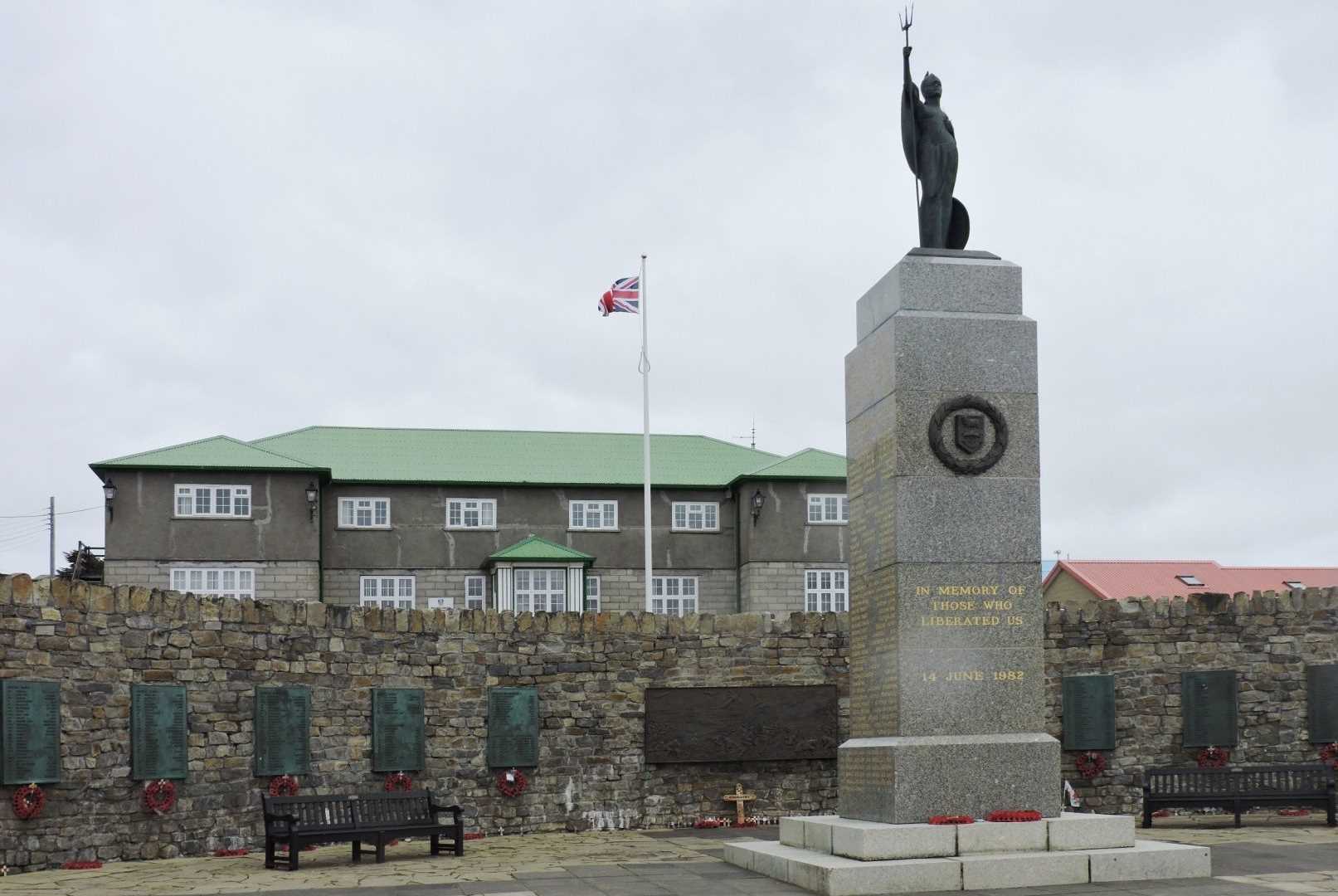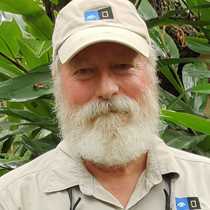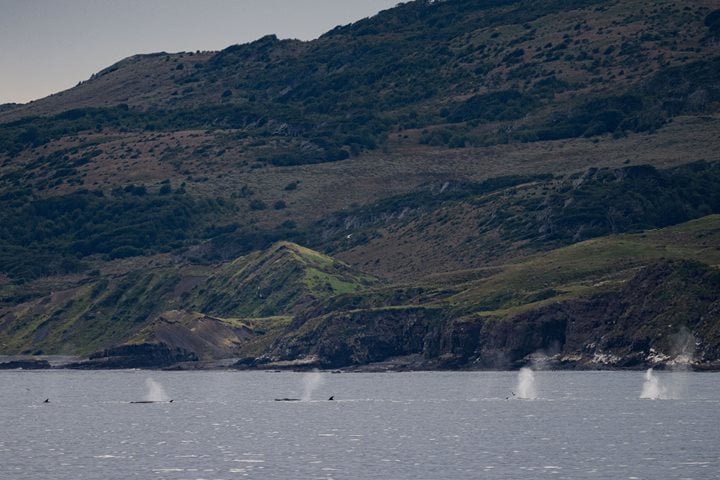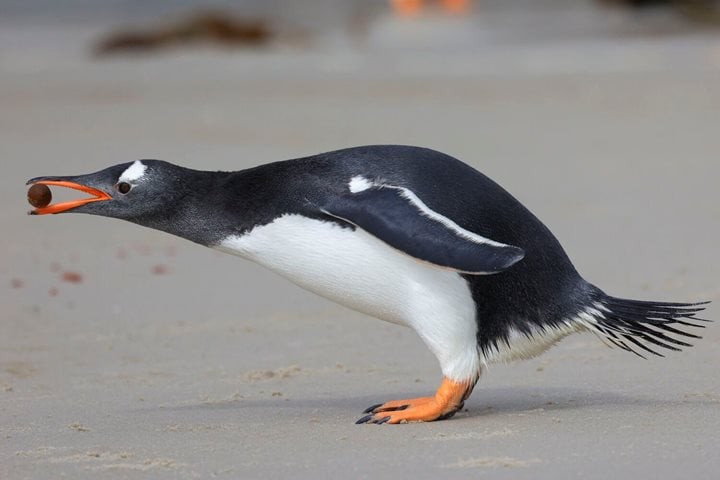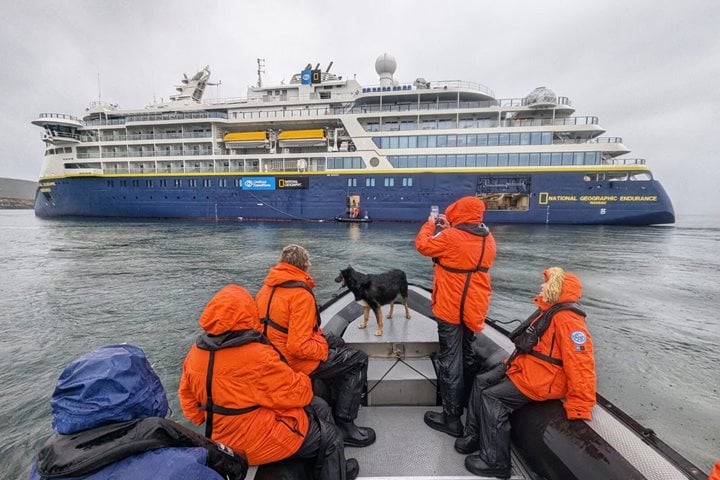We spent the day in and around the city of Stanley located on East Falkland Island.
Several different options were offered during our time here. Most people enjoyed a morning tour of Stanley and its environs, including a view of Government House, which was beautifully accentuated by the blooming gorse (a noxious introduced species). The two main war memorials, one for the Battle of the Falklands during World War I and another for the Falklands Conflict of 1982, were especially important today, because it was Veterans Day and we witnessed a somber ceremony outside the cathedral. The tour took us around the eastern end of the harbor to view the wreckage of the LADY ELIZABETH (a 19th century iron barque which limped into Stanley Harbor in 1912 after sustaining damage in a storm coming around Cape Horn). At this same stop, closer to shore, is a veritable boat graveyard, where we saw the remains of numerous smaller wooden vessels slowly disintegrating in the shallows. We also marveled at the Totem Pole, a sign post erected by the military which indicates the mileage to their home towns in Britain, and stopped at the town peat bog, which used to be the main source of fuel for the town. The tour ended at the wonderful Falkland Islands Museum, which houses an impressive eclectic collection of anything having to do with the human or natural history of the Falklands.
Another option was a visit to the Long Island Farm, where we got to see life on a typical working sheep farm (note that locals refer to this as a sheep farm, not a sheep ranch). Demonstrations were given of sheep shearing, sheep herding by a sheep dog, peat cutting, and a farm tea was enjoyed inside the main house.
In the afternoon, some guests visited the nearby Stanley Growers hydroponic farm located very near the ship. I think many among us were inspired to get to work on our gardens as soon as we return home. It is a very impressive operation today, which is especially interesting since Tim Miller originally started it as a hobby when he retired some years ago. Now it is essential for supplying fresh fruits and vegetables to the townsfolk and visiting cruise ships.
A few of us went out to Mount William, otherwise known as Tumbledown Mountain, located close to the western-most end of Port Stanley. Here, the hikers enjoyed a four-mile loop on a trail through grasslands and hard camp, which took us past two exposures of the beautifully layered and angled 400 million year-old quartzite deposits. The larger of the two provides a nice view of the surrounding hills and also contains a war memorial dedicated to those British soldiers who lost their lives here in the final battle of The Conflict in 1982.
Most of us, however, opted for an afternoon excursion to Gypsy Cove, which is backed by a beautiful white sand Caribbean-styled beach. The beach sadly is off limits because of mine fields in the dunes surrounding it. The mines were placed here by Argentinian troops during the 1982 Conflict and have yet to be removed. We walked along a path that followed the coastline, giving us great views of the beaches, rocky outcrops of ancient quartzite, and lush foliage. One plant that is common in this area is the weird balsam bog, a dense, rounded cushion plant that is composed of tightly packed, tiny leaves. It reminds one of a brain coral on some tropical coral reef. At times, this species exudes sticky drops of resin that smell like Biblical incense (think frankincense and myrrh). We also examined an old WWII gun emplacement, and most of us walked far enough to get a nice view of Stanley Harbour.
In the early evening, we retraced our route back out of Stanley Harbour, through Port William, and into a rather lumpy open sea.

